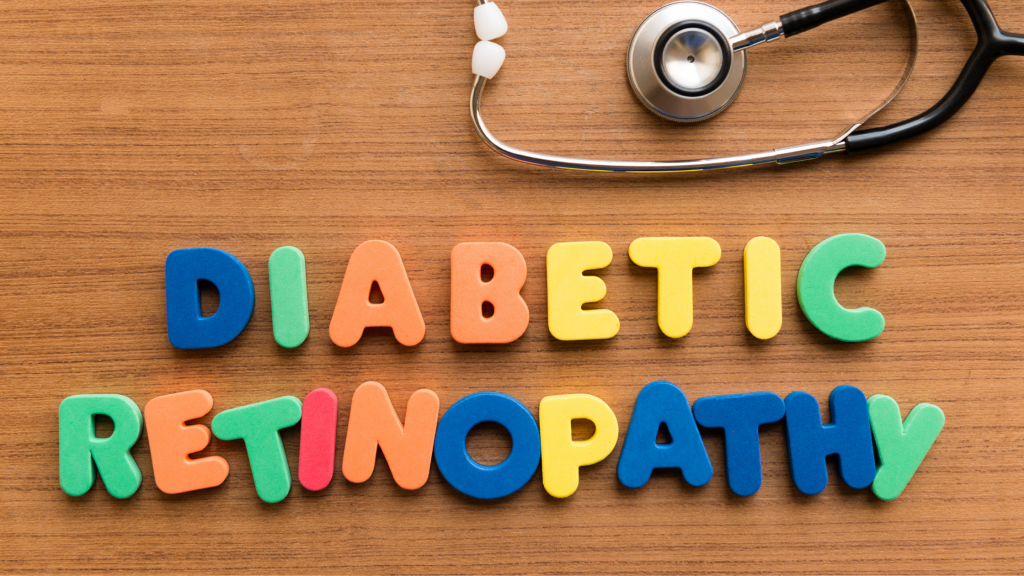Diabetic Retinopathy
Diabetic retinopathy occurs when the blood vessels in the tissue at the back of the retina get damaged. Diabetic retinopathy can be mostly seen in people who have had diabetes (diagnosed or undiagnosed) for a significant number of years. At first, diabetic retinopathy might cause no symptoms or mild vision problems but can be very dangerous if left untreated as it can increase the risk of blindness. The risk of developing diabetic retinopathy is known to increase with age and poorly controlled blood sugar.
Stages of Diabetic Retinopathy -:
There are 4 stages of diabetic retinopathy –
- Mild nonproliferative retinopathy – This stage is the initial stage of the disease, in this stage small balloon-like swelling inside the retina’s blood vessels.
- Moderate nonproliferative retinopathy – In this stage, the blood vessels which nourish the retina get blocked due to the increase in the number and size of the balloons like swelling.
- Severe nonproliferative retinopathy – At this stage, most of the blood vessels are blocked, which leads to the deprivation of blood supply to several areas of the retina.
- Proliferative retinopathy – This is the advanced stage of diabetic retinopathy. In this new blood vessels occur due to the retina’s signal to the brain for compensation of lost nourishment. These new vessels are fragile and prone to damage as well as leakage of blood. Prolonged blood and fluid leakage can cause blindness or vision loss.
Causes -:
- High cholesterol – High cholesterol is increasingly common with age and leads to diabetic retinopathy as well as other health issues. High cholesterol levels may lead to the breaking of blood vessel walls that cause clots in your retina.
- Smoking – Smoking is as bad for your eyes as it is for the rest of the body. If you smoke you have a high chance of developing serious eye conditions that can cause vision loss or blindness.
- High blood pressure – Hypertensive retinopathy is an eyesight disorder that occurs due to high blood pressure. Hypertensive retinopathy occurs when the blood vessels supplying blood to the retina in the back of the eye become damaged.
- High sugar level – High sugar levels can cause diabetic retinopathy by causing swelling of the lens inside the eyes, which results in blurring, or vision loss.
Symptoms of Diabetic Retinopathy -:
- Sudden changes in vision/blurred vision – People experience blurry vision and loss of eyesight or total loss of vision in diabetic retinopathy.
- Double vision – People also experience double vision problems. They see everything double whether it is an object or human.
- Eye pain – People may experience severe pain in their eyes in diabetic retinopathy.
- Eye floaters – Eye floaters are the small dots or strings that float in a person’s field of vision and continuously move in the direction that the person looks.
- Poor night vision – Due to the damaged vessels in the retina night vision loss, blurriness, etc occur.
Tips to prevent diabetic retinopathy -:
1) Maintain a healthy lifestyle and a healthy diet as it helps you to maintain optimal eye health.
2) Get low on fat, sugar, and salts. Avoid food items that are high in salts or sugar.
3) Say no to alcohol, if you consume alcohol on a daily basis then you have to curb the consumption. Quitting it all together is even better. According to dietary guidelines, a woman should not consume more than one drink, and a man should not exceed up to two drinks.
4) Say no to smoking, smoking is injurious to your overall well-being and it contributes to the development of many serious eye diseases.
5) Monitor and manage your blood sugar levels as it is especially beneficial for your diabetes and diabetic retinopathy.
Home Remedies -:
- Amla Juice – You can consume amla juice early in the morning with an empty stomach. Amla juice is rich in vitamin C which is beneficial for the eyes.
- Bottle Guard Juice – Bottle guard juice is also very effective and beneficial for the eyes. It is a major source of vitamin C . Take this juice in the morning with an empty stomach.
- Sandalwood Paste – It is seen that a person experiencing diabetic retinopathy put the sandalwood paste on his closed eyelids to get pain relief and it works, as sandalwood has pain relief and inflammatory curing qualities.
- Fenugreek Seeds – They have many medicinal qualities and can prove useful in the treatment of diabetic retinopathy.

